PostDigital Artist Roderick Quin reflects on her works' origins, inspirations, and discusses its relationship to Sculptural Imaging™
March 31, 2022 marks the sixth anniversary of the passing of a true legend of global architecture, Zaha Hadid.
Born and educated in Baghdad, Iraq before moving to London, UK in 1972, Hadid went on to have a historically interesting and influential career in architecture and design. The stylistic innovations and unique compositional beauty of her buildings made her work some of the most significant contributions to architecture in the late 20th and early 21st centuries.
She was called the “Queen of the Curve" and was awarded many prizes during her lifetime, including the Stirling Prize in both 2010 and 2011, becoming the first woman to win one of architecture’s most coveted prizes.
Though Hadid died at age 65, her achievements and influence on the global conversation about art, architecture and design are profound.
In this piece PostDigital Artist Roderick Quin, creator of Sculptural Imaging and founder of Ombrae Studios, provides a critical reflection on Hadid’s work, her influence, and the time he proposed the Ombrae System to Hadid’s team in their London offices just a few years before her passing.
Q: Rod, tell us about your experience with Hadid.
My first meeting with Zaha Hadid Architects was in the spring of 2007 at the ZHA studios in the old elementary school building that they occupied at 10 Bowling Green in Islington, London. The red brick building had not been updated into the modern high-end interiors that one might have expected from one of the top architectural firms in the world. It had that special dingy feeling and dusty smell, that din and echo of wooden floorboards and walls of an old Victorian building. Entering into the main lobby, after passing through a small iron gate from the street and through what was once a playground courtyard, was the reception counter, small seating area for clients, a wide wooden staircase leading to other floors, adjacent rooms, and hallways leading off to other parts of the building's main floor. From where I sat in the holding area, I could see into a few of the side rooms, maybe old conference rooms or teachers rooms. They were filled with young architects sitting in rows across from each other, elbow to elbow at unadorned wooden tables and benches, all heads down over their computers. Somewhere down one of the hallways behind these rooms, ZH had her command centre in the headmaster's office, probably sitting behind the same old leather topped wooden desk.
These were early days for Sculptural Imaging™ art technology. I had been invited by a group of young architects in the firm to make a presentation… origins of Sculptural Imaging™ and my artist background…presenting to thirty architects. After the presentation, I was enthusiastically accosted by many of the architects, young men and women that were from every corner of the world: Europe, South Africa, India, South America, North America, and Australia all with ideas for applications and questions about Sculptural Imaging™ - Ombrae. I came away with architectural plans and renderings and invitations to consult on a number of projects. This was very exciting for me obviously…here I was in the studio of one of the most influential architects in the world and I had the potential for multiple projects for Sculptural Imaging™ - the Ombrae System.
I was asked to return in 2008 for another round of meetings, but with no evidence of project commitments. The interest in Ombrae continued for a few years afterwards with the young architects in the ZHA offices…a new hotel in Dubai and others. It was during the second round of meetings in London that it came out confidentially, that ZH and Peter Schumacher her partner, were likely going to pass on Ombrae. It was a strong artistic technology and would probably become widely adopted on its own merits, and therefore couldn’t be integrated or meshed with the heavily branded design messaging and aesthetic of ZHA. This, despite the passionate interest of the young architects in the firm. I continued to be contacted over the next couple of years by excited architects from ZHA. I guess they were new, and hadn’t been given the news that Ombrae technology was off the table at ZHA.
I think we received so much interest in Ombrae when it hit the design and architectural world in 2005 because it was so novel. It arrived as many creative industries were getting into computer-based image processing in a big way. I showed that there was a way to create 3D surfaces driven by parametric design, impactful at architectural scales, and also at smaller scales in industrial design applications, using the same materials and manufacturing technologies that were already being used in industry. Others were quickly coming into broader use: not only in architecture but in automotive, fashion, consumer electronics, and other industrial design applications and products..
The breakthrough in computational and parametric design tools was the magic formula for Sculptural Imaging™ to get a foothold in art, architecture, and industrial design.
Q: What is Zaha’s most impressive work/aspect in your opinion? What did she do that others had not or could not?
I think ZH’s success was based on a number of things that all came together for her. Her timing was good in that the 1980’s into the late 1990’s and early 2000’s saw large-scale architectural project being completed all over the world…places like Bilao Art Museum by Frank Gehry, Daniel Libskin’s Ontario Museum of Art, and many others were setting the stage for ZHA to sell her designs to countries and cities around the world. These buildings were setting down a paradigm shift and approach to urban development that became popularly known as the “destination architecture effect”. Designed to pull in tourist dollars to new museums and allow urban development to grow around them.
ZH worked as junior architect in the offices of Renzo Piano and Richard Rogers in the 1970’s, which likely exposed her to this sweeping zeitgeist. This design philosophy informed ZH, and allowed her ultimately to bring it into her own work once she became established on her own.
The early theories, concepts, and design premises for ZH were based on Kazimir Malevich’s work on perceptual aspects of vision and the relationship between the three-dimensional objective world and his painting that rendered multiple points of perspective. In ZH’s early two-dimensional paintings, a conceptual object in space was built from multiple views: ZH drew directly from Malevich’s theory of painting and architecture. Objects, foreground and background, conceived as pictorial elements that could be interchanged through spatial blocking in 2D on the painted surface.
It was the breakthroughs in computer science that allowed ZH and her engineers to exploit the basic concepts of these historical cubist/constructivist/suprematist presidents. She then could applied them to architecture, ultimately changing the way buildings could be conceived, designed, and built.
At the time I met the ZH Architects in London, other big architectural firms were also expressing interested in Ombrae: Jean Nouvel, Norman Foster, Frank Gehry, and Canadian architect Bing Thom (we did SAIT with him in Calgary, Alberta). These big international firms all wanted to know about Ombrae. It was new and novel. Sculptural Imaging™ is based on the same computational and technical breakthroughs that these architectural firms were beginning to bring into their own design strategies.
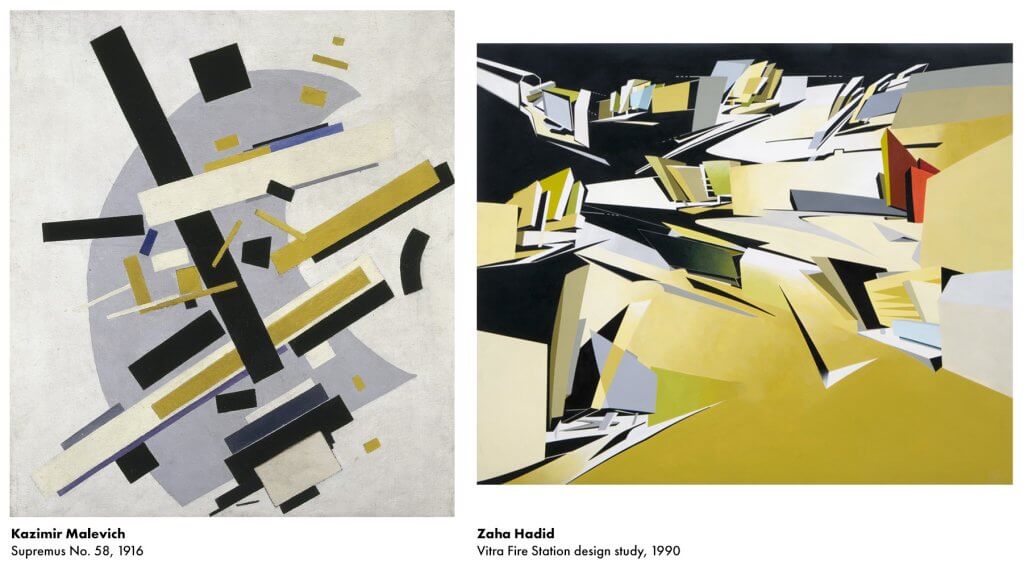
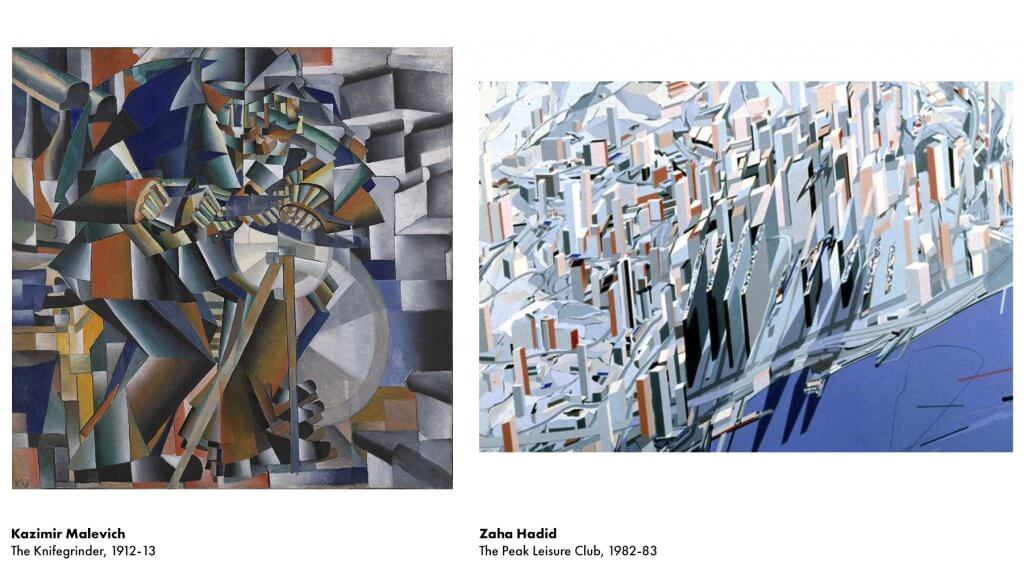
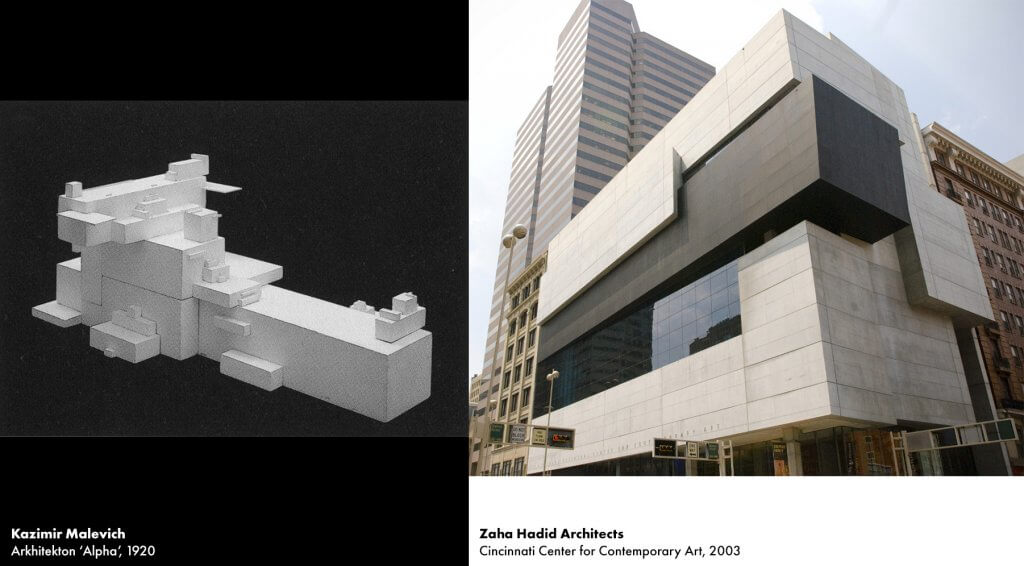
Q: What's your critical view of Hadid's work?
Hadid’s inspirational background was rooted in Russian Constructivism. Kazimir Malevich was her genesis: Cubism, Suprematism, Constructivism⏤all heavy in conceptual theory. If we examine the history of painting from the first quarter of the 20th century in this area, we can see the trends: objectivism and non-objectivism…foreground, background, positive space and negative space; elements that could allow conceptual juxtaposing to elicit multiple avenues of thinking about perception, with 3D space all worked out in 2D space.
Other than the direct relationship to ZH, with her exposure and exploits of computational design concurrent with my own, it's our background in the history of art, painting, and sculpture that there is probably the only crossover from ZH to my own work. In my paintings, painted constructions, and sculptures from the late 1970’s through to the late 1980’s, I was interested in creating architectural space that was not necessarily objectively physical…a space that was subjectively implied but not visible; tangibly present only through the gestalt of perception, thought, and bodily motion. A raw, visceral sense of the space, generated by the observer’s engagement of the prompts from the sculptural work’s presence; sculpture and observer immersed together to make the space real.
The primacy of the lit and shadowed world of objects, and the spaces they are integrally part of, give us the reflection and re-reflection of our stereoscopic views of the world around us. These are the somatic tools that allow us to physically navigate through space and in time. Hence, interpolating experience through cognition into thoughts, forms of expression, and actions.
I am not an architect. I did want to be an architect when I was a child, but ultimately becoming an artist with ideas about architectural sculpture granted me a greater freedom to think and build architectural sculptural spaces without the imposed restrictions and formalities of the discipline. I realized for me that being an architect would be like wanting to make a painting or a sculpture and having to look into a mirror with one hand tied behind my back to do it. Having said that, to be fair, I’m a bit jealous of architects, at least the ones like ZH that had so much power and influence.
Hadid and I are about the same age, but from very different backgrounds. What is similar is our exposure to the same art history and being painters at an early stage in our careers. Like her, I realized that my painting and constructions were plans for architectural spaces.
I came into the use of computer science at the end of the 80’s, but it was in 1983 that the realization of what computers could mean for my art became clear. I remember thinking with excitement about the potential of building things that would be impossible without the power of computational design. The phenomenal increase in computational power has since allowed for the development of parametric tools in extraordinary ways…I have followed its development and have integrated these advancements into my work since then…now over 40 years.
In my university studio work, and gallery works in the 1980’s and early 1990’s, I was interested in thinking of architectural space as a continuous perceptual field. I was asking the observer to place themselves in that field and be drawn through it by the interactions with the sculptural work which I conceived as part and parcel of the architecture.
There was an intentional design strategy built into the work to put the observer into a frame of mind that was in reality outside that frame….drawing them outside the perceptual/conceptual framework that we carry around throughout our daily lives. To engage architectural space without the normal projections and expectations that we normally attach to it.
I had my own influences, of course, that informed and inspired my ideas: the New York colour field painters like Mark Rothko, and Frank Stella were two of the most influential. In the west, it was James Turrell, Robert Irwin, Richard Serra, Donald Judd, Robert Smithson, and many of the other so-called minimalists all had an impact. Dense conceptually, but somehow I was inspired by the simple truth of what they were doing.
Their work was anchored in building upon ideas of the time in the fields of neuroscience and physics. Scientific breakthroughs, from 1967 into the 1980’s and beyond, were the bases for an artist movement that was trying to see past the historical reduction of the artwork as object and past the inertia of the museum’s political and economic stranglehold on innovation and what could or could not be justified as art. I found within this philosophical approach that I didn’t have to bend myself into some kind of intellectual contortion to have inspirational direction. It all seemed to come naturally.
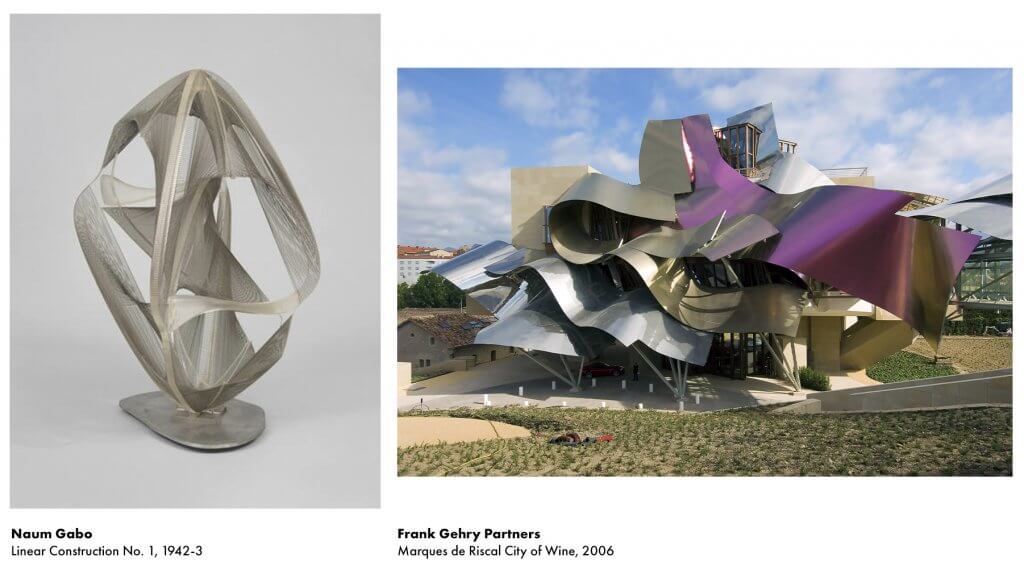
Q: What are some aspects of Zaha's work that you appreciate?
Hadid seemed to me (like most architects) confined by the basics of history and the hard problems of architecture…the well-laid routes that modern architects were bound to follow. Parametrics in architecture and design were the one breakthrough in the development of computational design that gave ZH the ability to move “off the grid”. She was able to start to design with curved planes and volumes without support.
Building a ZH building was something of a nightmare for many engineering firms and builders when trying to realize these science fictional structures…only very highly placed clients with extremely deep pockets, and the deep pockets of public funds could ever think of getting into a ZH project. As an artist and designer working in architecture, I’m subject to normal and sometimes troubling budget constraints. Seeing a ZH building, as I have many, I’m convinced budget was the last thing on the agenda and furthest thing from an issue.
There were many failures. Drawing a building on a computer with complex curves and unsupported spans in exotic materials, with no corners or flat planes, is one thing. Engineering and building it is an entirely other matter…with ZH nobody seemed to care at the outset about these challenges of engineering and materiality…as ZH is purported to have said numerous times to her architects and engineers during the design process…”someone will fix that later”.
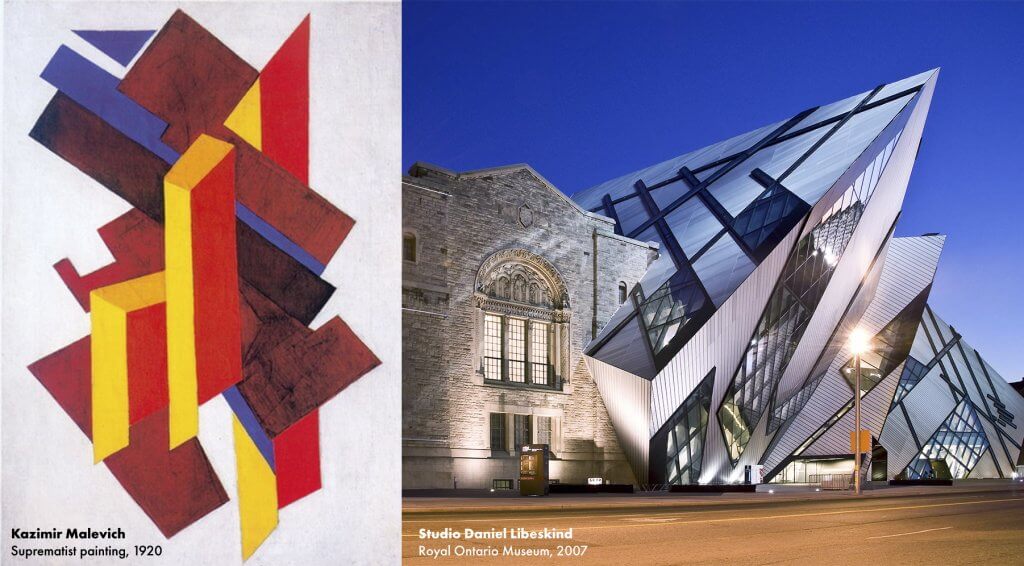
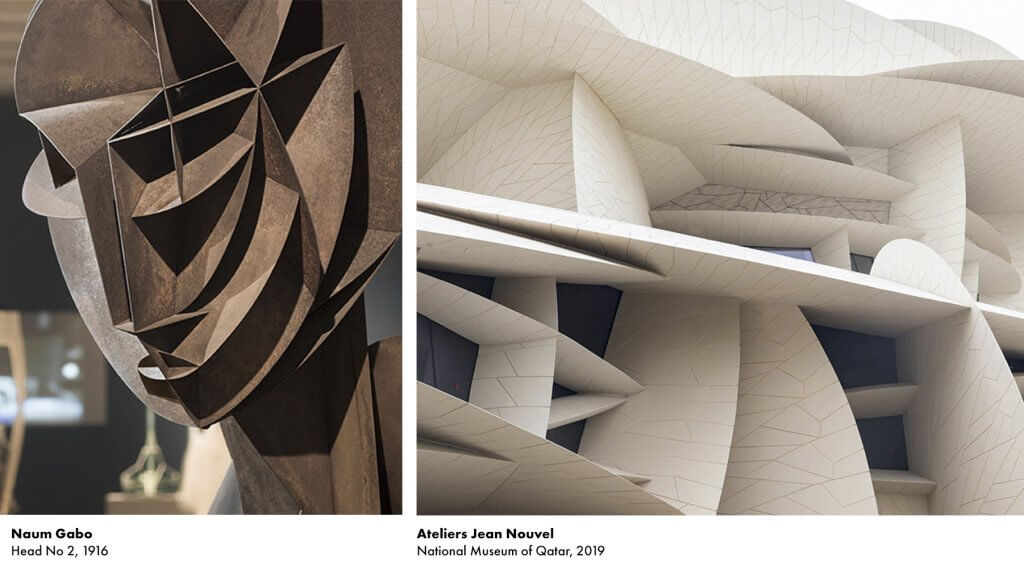
Q: What do you feel is Zaha's legacy for architects and artists of today and tomorrow?
I hope the new generations of architects and engineers can learn from Hadid and the other big architectural names and the work they did, that we need to move the profession to another level. One that takes seriously the role and responsibility that architecture must play in the environmental and social issues we have in the world.
What sticks out to me, fundamentally, is that ZH and the other so-called "starchitects" of that era…were trained from modernist schools of thought and guided by architectural canons of the time, and heavily influenced by the history of art and architecture. Computer science handed them a new set of tools and strategies, but they really could only keep on doing the same thing: now with curves instead of flat planes with 90 degree corners. The real value of parametric design at ZHA didn’t start to dawn until much later with ZH’s partner Peter Schumacher, with the integrated urban design planning that parametrics could allow. This potential, to my mind, has yet to be plumbed fully by anyone.
My approach to art and architectural design (to me the same thing) is to be informed by the breadth of the computational design opportunity, and then visualize what's not visible and design from there. Trying to see the dynamic forces of energy in and around something you haven’t necessarily built yet, and let the space and the structure work it out together.
Computational design and Ombrae Sculptural Imaging™ are really made for one another. Now that our studio is able to not only create 3D images on a building facade, we also have the potential to make that image design have a voice in the overall environmental effectiveness...extending the creative field of influence to include the actual environment. We are responding to the dynamics of motion, placing and displacing energy like the flow of wind and water.
Ombrae is an image-driven art and design technology…creating 3D textured surfaces that visually and physically interact with the perceptions of the viewer and the physical environment. Parametric design tools are the key to visualizing the invisible. Over the past few years, we have begun to use computer fluid dynamics (CFD) in our architectural and industrial design projects spanning automotive, sports applications, and other industries. We are moving towards the capability to predict and analyze the architectural interface of a building facade and the environmental parameters of its placement. We predict that this will contribute substantially to building passive solutions that will help mitigate energy loss or energy gain (depending on the environmental conditions of a given building and its location.) At the same time, we want to ensure the facade is beautiful and all part of the art.
In conclusion, I feel disappointed that ZH and that class of architects in the world with similar levels of influence and opportunity, did not contribute earlier to the obvious needs that we face environmentally that have been identified and discussed for a long time, decades in fact.
They missed an opportunity to become powerful voices of action, engaged in developing viable solutions to mitigate the dangerous conditions in the world regarding climate change, and the social changes that are and will continue to be part of that.
Q: What does the future of your work look like and what impact do you foresee it having on art and architecture?
As a PostDigital artist I can feel the merging of art, science, technology, and architecture into a new disciplinary zeitgeist. More than just a merging of ideas, but a new understanding of what art, science, technology and architecture really are; revealing the power of what they can deliver to the world as a collective force.
If ever there was a time for this to come together, it's definitely now. I have a unique chance with an art-based technology like Ombrae, to show by example the merging of these disciplines into a new understanding and definition of what art is, and what it can do to build a movement toward a collective and positive force for change.
